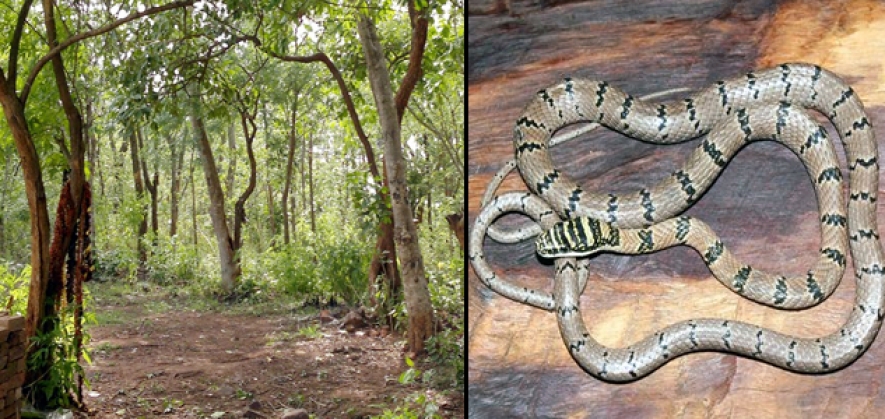The development, which significantly expands the known area of presence of this species, also indicates its probable movement between the dry zones of peninsular India and Sri Lanka, which remained connected around 17,000 years ago.
The rare sighting has found a mention in the tenth anniversary issue of ‘Checklist’, the journal of biodiversity data. The January 2015 edition released on Thursday indicates that the sighting of the snake in Chamala area of Seshachalam is the first-ever confirmed record of C. taprobanica from India and anywhere outside Sri Lanka.
The study was conducted by researchers Bubesh Guptha and N.V. Sivaram Prasad of the Biodiversity Lab in the Tirupati Wildlife Management Circle under the guidance of the Conservator of Forest M.Ravikumar, in collaboration with Simon T. Maddock of The Natural History Museum, London and V. Deepak of Centre for Ecological Studies, Indian Institute of Science (IISc), Bengaluru.
In fact, an unidentified specimen suspected to be chrysopelea taprobanica was sighted in the year 2000 in Rishi Valley, Andhra Pradesh and even photographed by V.Santharam, but the specimen was not collected. “In November 2013, we collected the specimen in the dry deciduous forest of Chalama and conducted morphological studies and DNA test to prove that it is the same”, Mr. Bubesh Guptha told The Hindu.
The chain of broken hills in the peninsular India, comprising the Eastern Ghats, has remained unexplored compared to the Western Ghats. “The Eastern Ghats are a repository of biodiversity and further studies will certainly bring newer species to light”, says Mr. Sivaram Prasad.
The recording of this snake is considered prestigious as it adds a new species to the biodiversity list of India.




















